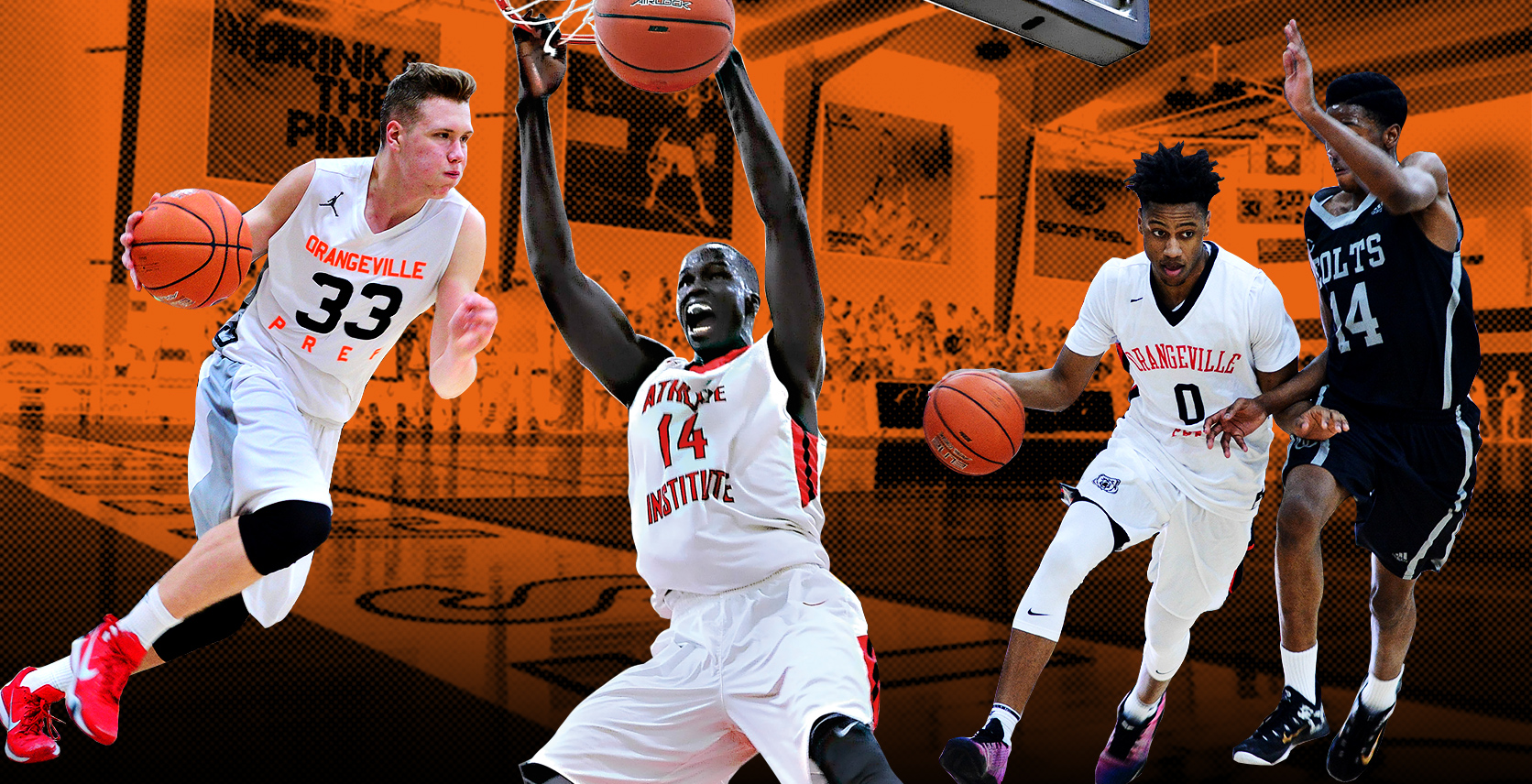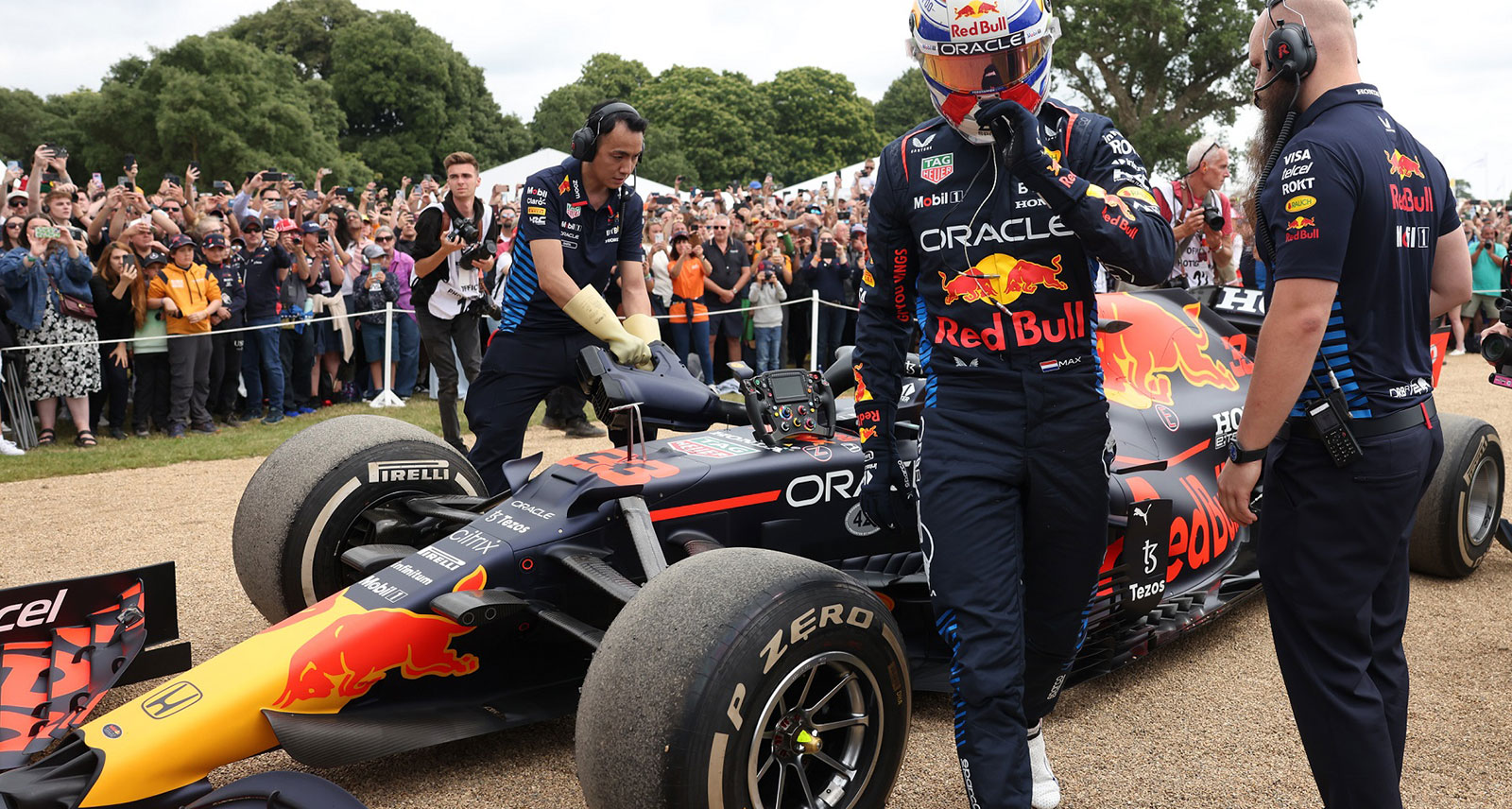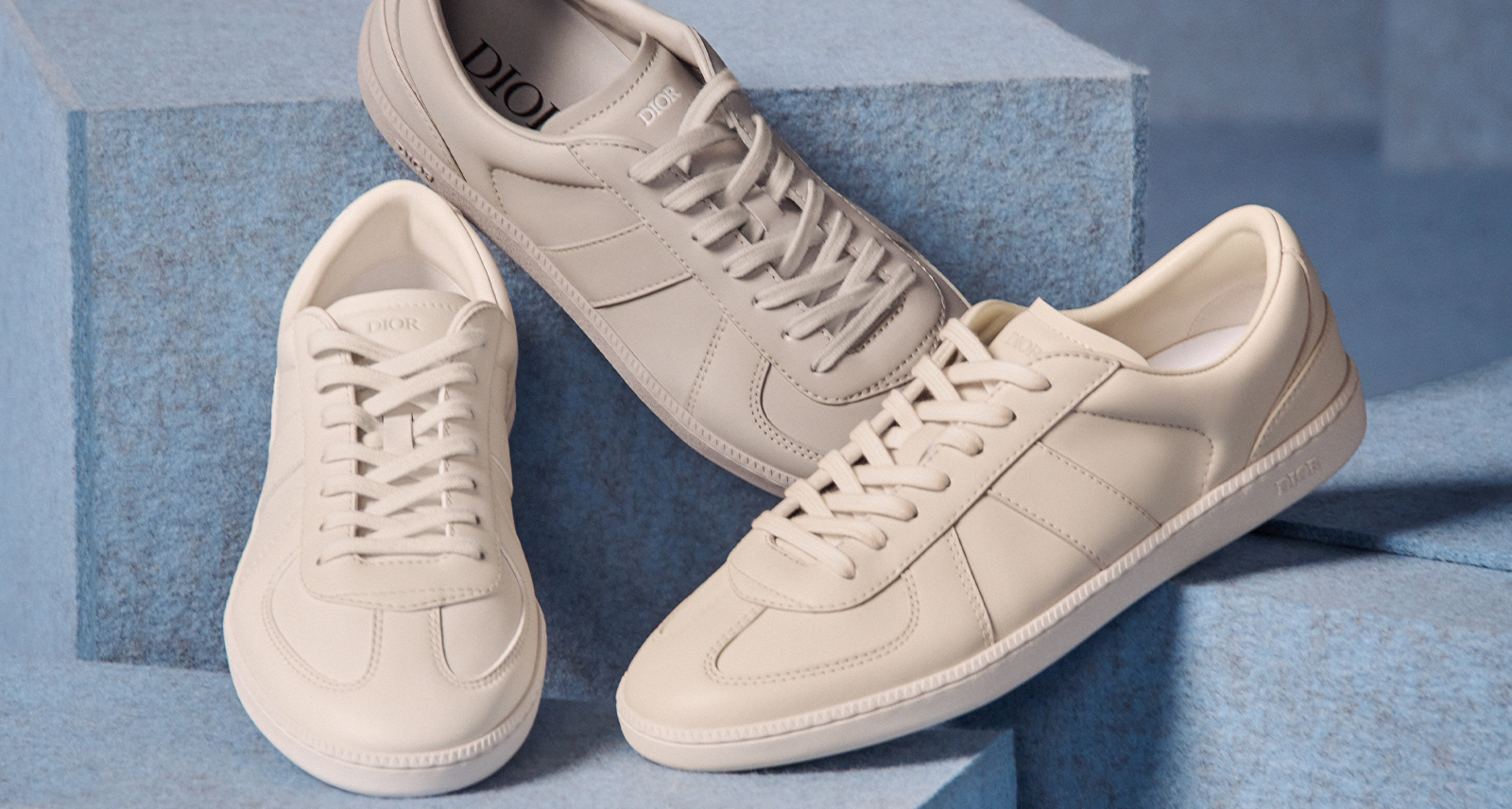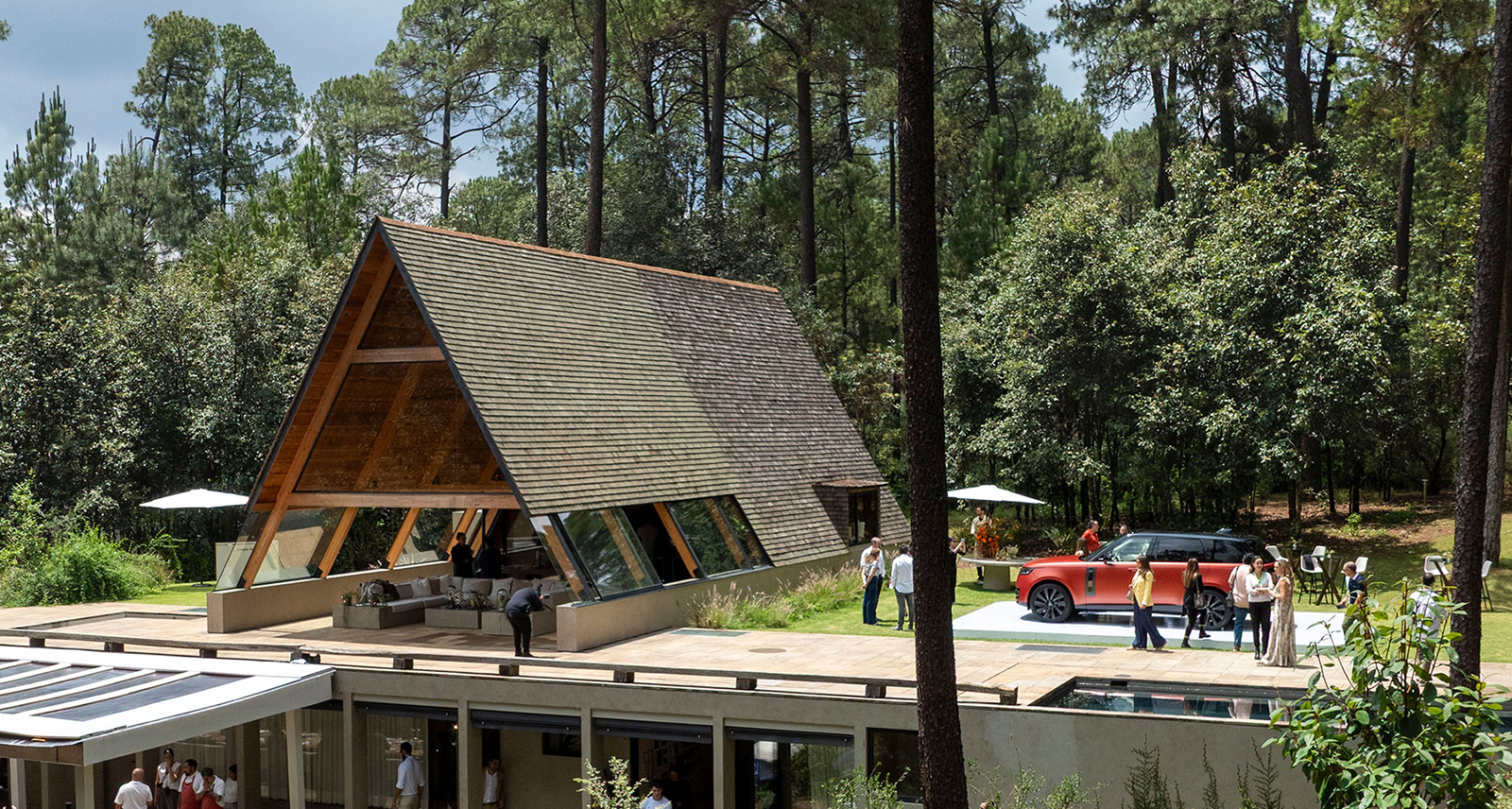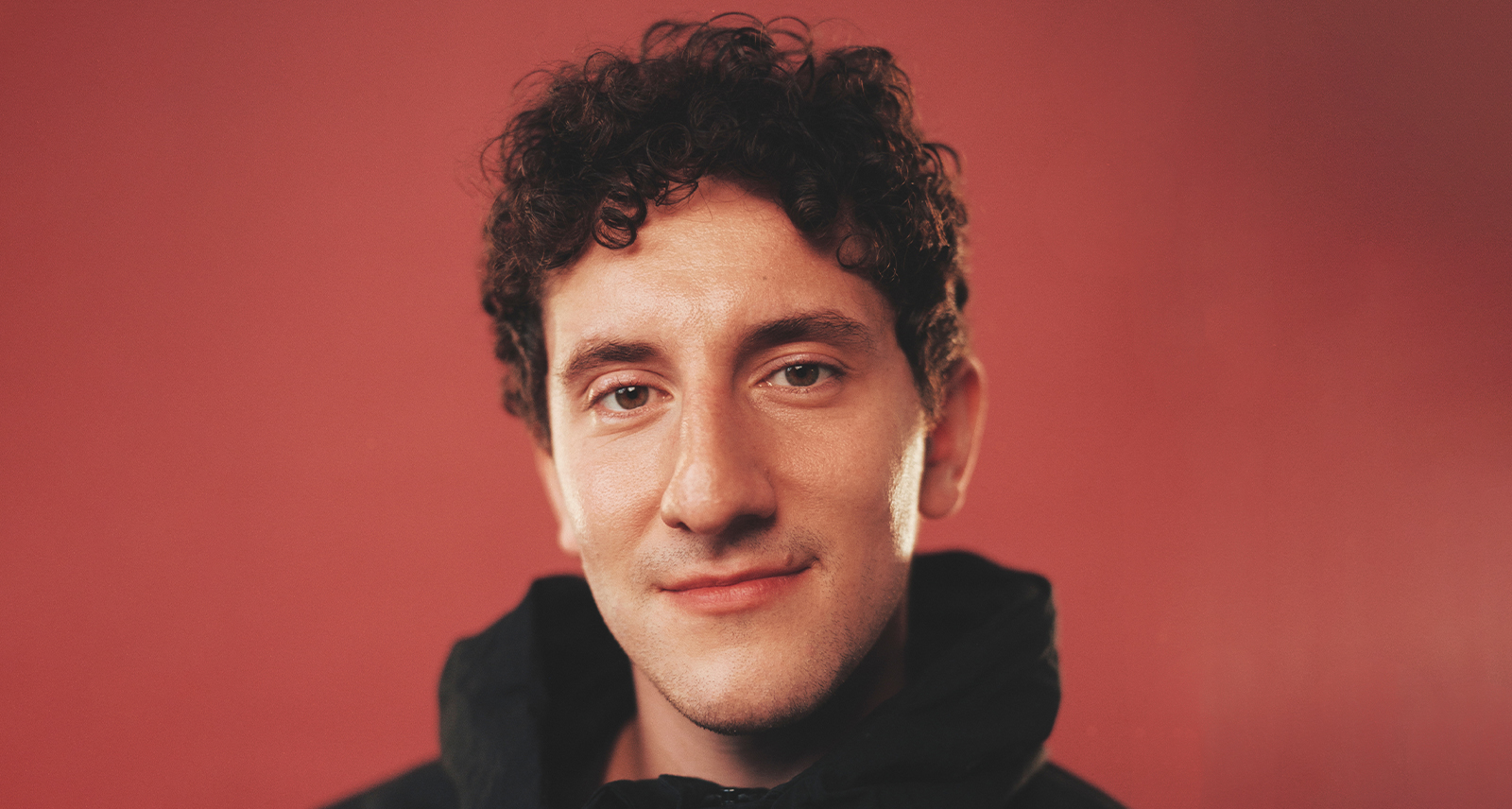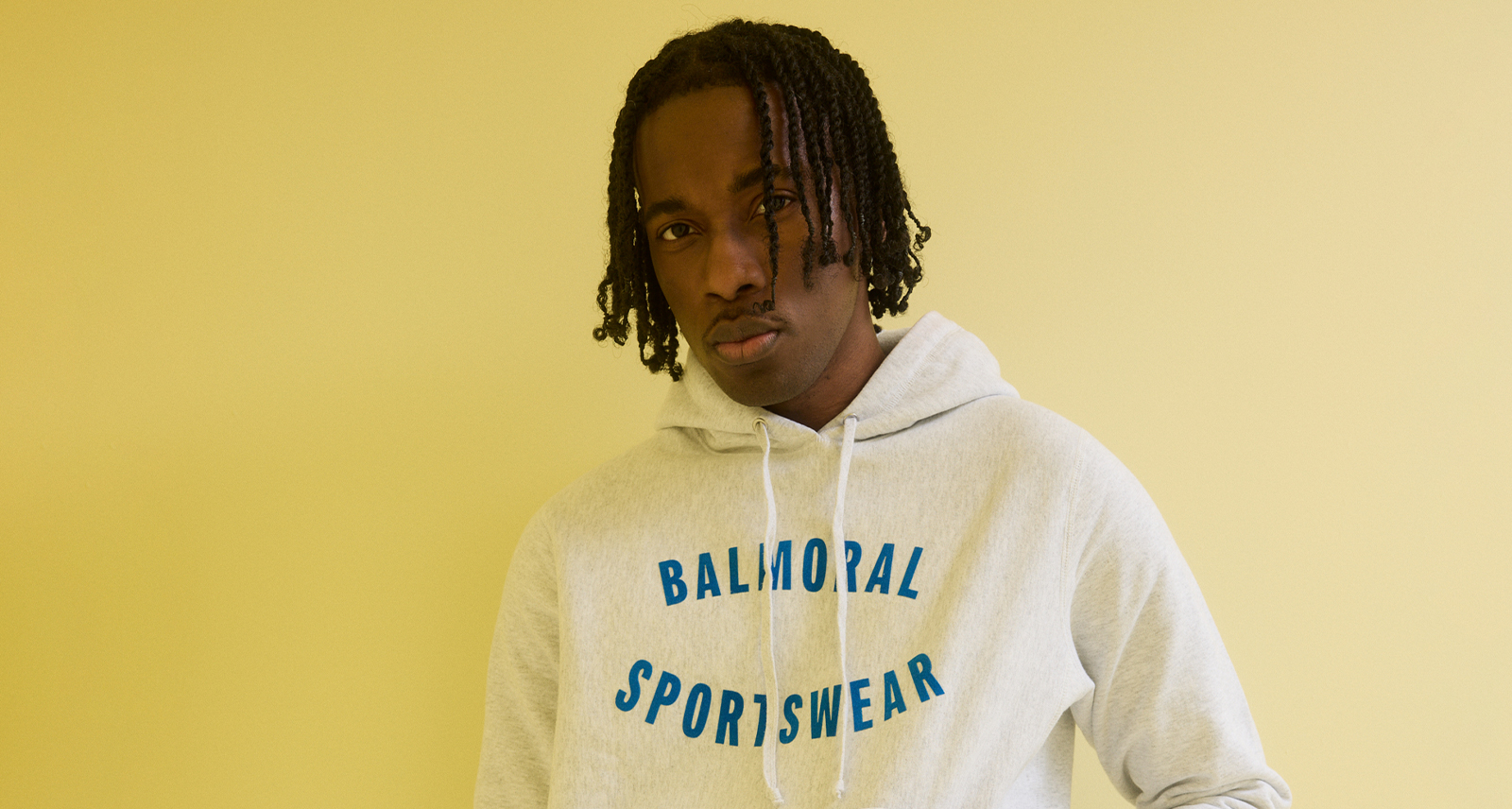Inside the Ontario Prep School That’s Building the NBA’s Next Superstars
The epicentre of Canadian basketball is a low-slung building on a country road — 12,000-square-feet of spring-loaded hardwood floor encased in grey metal siding, plunked down in a field outside Orangeville, Ontario.
From downtown Toronto, the Athlete Institute Fieldhouse is an hour-long drive — nearly twice that during rush hour, which is basically always — that takes you through copses of scrubby pines and onto a thin stretch of highway on the outskirts of Orangeville, where an Anglican church and a Mazda dealership are the only two-storey buildings on the horizon. It’s an unlikely spot for basketball dominance — a nondescript town in a frozen country that isn’t known for producing on-court talent, miles from the legendary playgrounds and storied prep schools of America. And yet over the last few years the Athlete Institute has become an incubator of world-class basketball players, a magnet for teens with dreams of the NBA from across the country. Kids enrolled at the basketball-focused prep school attend local Orangeville District Secondary School, then spend the rest of their waking hours working out, practicing with teams of coaches, and playing against some of the top schools in the US. And the basketball world has taken notice, with scouts and the coaches from NCAA powerhouses all patiently making the long trip north, venturing down icy Ontario roads to a town no one has heard of in order to catch a glimpse of the future of basketball.
•••
Until very recently, the history of Canadian basketball could be summed up in a few bullet points. 1) Canadian Dr. James Naismith invents the game in 1891 in Springfield, Massachusetts. 2) A century of national mediocrity. 3) Steve Nash. There were a few exceptions — players like Jamaal Magloire or Denham Brown who some- how scrabbled their way into the NBA — but their rarity only reinforced the conventional wisdom: in a country utterly dominated by hockey, basketball would never truly thrive.
In the last five years or so, all this has changed. Canadian basketball has exploded. In 2011, local kids Tristan Thompson and Cory Joseph were both taken in the first round of the NBA draft. In 2013 and 2014, Anthony Bennett and Andrew Wiggins were taken number one overall in consecutive years — an unprecedented feat. At the start of last season, there were 12 Canadians in the league, an all-time high.
There are plenty of reasons for this eruption of talent. After 20 years, the Toronto Raptors have made their mark on the country, with kids who became passionate about basketball during the Vince Carter era finally growing into players themselves. Immigration patterns have brought people from basket- ball-loving corners of the world to the Toronto area. But any history of the rise of Canadian basketball needs to begin in the suburbs of Toronto, from Brampton to Orangeville, where a few coaches and club teams have built the infrastructure that has allowed a generation of players to flourish.
Basketball is a youth game. It’s a sport where a particularly talented 18-year-old can earn multimillion dollar endorsements and inspire professional sports franchises to throw away entire seasons in the hopes of landing a low draft pick. In the US, an intricate system exists to discover, train, and sometimes exploit these gifted teens. There are prep schools that focus entirely on basketball and club teams in the American Athletic Union (AAU) that travel the country, showcasing talented 15-year-olds. But in Canada, until very recently, there was simply nowhere for a promising basketball player to go.
The first local team to truly make its way into the world of AAU basketball was CIA Bounce, formed in 2006 when rival Toronto-area coaches Tony McIntyre and Mike George became tired of constantly clashing in tournaments and decided to merge their squads. The team was filled with the talented kids who were sprouting up around the suburbs of Toronto. At CIA Bounce’s first big tournament in 2007, the King James Classic in Akron, organizers put the un- known Canadian team in distant gyms, away from the eyes of scouts and college coaches. Slowly, the kids worked their way through the opponents, shocking everyone by making it to the semi-finals. Canadian youth basketball had arrived.
Since then, CIA Bounce emerged as a North American powerhouse, often the sole Canadian team in elite tournaments. Nearly all of Canada’s top players, from Tristan Thompson to Andrew Wiggins, made their way through the team at some point, playing club games during the summer. In the fall, however, they would inevitably head south, to American prep schools like Huntington and Findlay Prep.
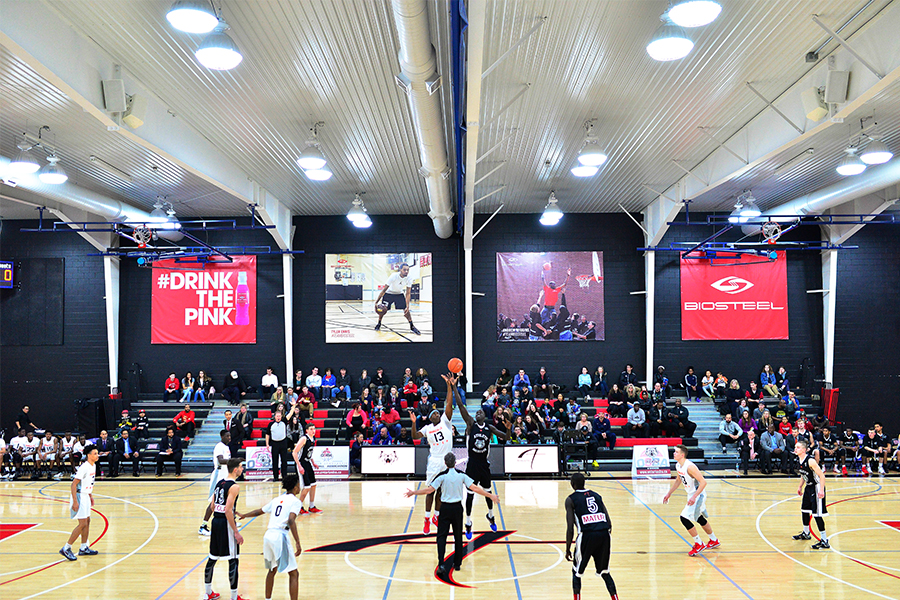
For Jesse Tipping, this felt like a wasted opportunity. Born into a family that had become wealthy in the trucking industry, Tipping played competitive basketball in high school and university but felt that he’d never had the kind of training and exposure needed to maximize his potential. In 2010, Tipping and Adam Hoffman started a training facility out of the Fieldhouse outside of Orangeville, an arena that Tipping’s father had built years earlier, anticipating Toronto’s slow sprawl. “I noticed a lot of people I was training would go down south to other schools,” says Tipping. Sending a 15-year-old to study miles from family and friends could be risky and emotionally draining. There were horror stories of kids who enrolled in fly-by-night schools that weren’t what they seemed. Entire careers were wasted because students hadn’t met the minimum academic standards to play in the NCAA. Tipping wanted to build a place closer to home, so that Canada’s best teenagers didn’t need to leave the country to pursue their dreams. He named CIA Bounce’s Tony McIntyre director of basketball operations.
Trying to start a top-tier basketball prep school from scratch was audacious. NBA players simply didn’t emerge out
of Canadian high schools. How could you convince top players to risk their careers, hoping that American scouts would bother tracking a team in Orangeville? “Most of the people I talked to thought we were crazy,” says Tipping. To compete for top players, Tipping offered the best possible facilities and amenities: a full-time staff for physiotherapy, strength and conditioning training on gleaming new machines, and coaches who had worked at collegiate levels in Canada and the US. But in the world of youth basketball, with players competing for the admiration of college coaches and NBA scouts, players need exposure as well as training. They needed to be seen.
In 2012, the first year of the AI basketball academy, Tipping remembers having to beg organizers to get into the big tournaments in the US, desperately trying to convince the American basketball cognoscenti that his team of unknown Canadians from an unknown school could be competitive. “It was tough,” he says. “Every minute on the court we had to be twice as good as the teams we were playing.”
The team’s first big break came when 16-year-old Jamal Murray decided to enroll at Athlete Institute. The sweet-shooting, Kitchener-born point guard had just been named MVP at a tournament for the best high-school players on the continent. He was a five-star recruit who had dozens of top schools begging him to sign on. Instead, Murray chose to stay home and go to the Athlete Institute. “It was a real stepping stone for us,” says Tipping. “It gave us some more credibility when going to tournaments. It allowed all the other Canadian players to think, ‘If it’s good enough for Jamal, then it’s good enough for me.’”
In 2014, the basketball world was shocked when Thon Maker, then the top high school prospect in his year, decided to play in Orangeville. The seven-footer had an inspiring story — journeying from Sudan to Australia to America — and an electrifying mixtape that sold him as a mixture between Kevin Garnett and Kevin Durant, making him a sensation among grassroots basketball watchers. The fact that Maker chose a school in Orangeville, Ontario, was the biggest validation a team could get. Scouts began booking their trips north.
•••
On a frigid evening last winter, the parking lot of Athlete Institute was filled with cars, packed tightly between the snowdrifts and overflowing into the CrossFit gym next door.
Inside, the mood was celebratory. The stands were filled with kids and local families who cheered while Rihanna thumped over the loudspeakers. A poster with Andrew Wiggins’ face was stretched across bleachers. The former number-one pick was the embodiment of a new kind of Canadian dream — from the suburbs of Toronto to the NBA — that each of the kids on the court hoped to emulate. The game was just days after Toronto hosted the NBA All-Star Game. For a week, the Athlete Institute players had felt themselves at the centre of the basketball universe — playing exhibition games, watching the festivities, meeting some of their heroes.
Orangeville is a lacrosse and junior hockey town, but the locals have taken to the newcomers, coming out in droves to watch a bunch of lanky high schoolers battle one another on the hardcourt. “It’s just cool,” said Karlie Peel, a 16-year-old Orangeville student wearing ripped jeans and a toque. “I mean, last year I was best friends with Jamal Murray and now he’s huge. This year we have Thon Maker.” She looked at me expectantly, as if I hadn’t quite understood what that meant. “That’s a big deal, to have Thon Maker at your school.”
Athlete Institute has grown large enough to field two competitive teams — arbitrarily labeled Orangeville Prep and Athlete Institute Prep. This game was between the two squads, but despite the fact that they were playing against schoolmates, no one was taking it easy. In the first quarter, Thon Maker picked up a loose ball, unfolded all seven feet of his gangly frame, and sprinted down the court for a dunk. The next possession his younger brother Matur — 6’9”, rail thin and scrappy — dribbled the ball up the court. AI’s full-court press was frustrating the Orangeville team. The Maker brothers were seemingly all limbs, enveloping point guard Jaelin Llewellyn and forcing turnover after turnover.
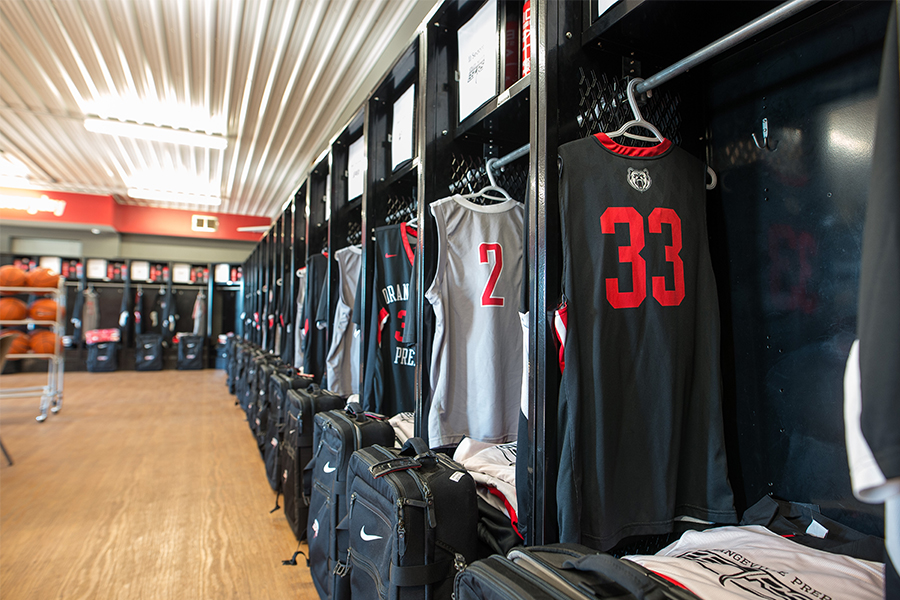
Up in the stands, Tony McIntyre watched the game while sipping a Coke. “One team just wants it more,” he said. The court full of athletes beneath him was more than enough proof that his work with CIA Bounce and Athlete Institute had borne fruit. “Five years ago, I don’t think anybody believed in the competition level of high-school basketball here,” said McIntyre. “The fact that you can stay in Canada, play, and be able to go down into the States. I think that put America on notice that we’ve got something special here.”
On the court, a 6’7” Newfoundlander named Cole Long drained a three-pointer with perfect form, elbow at a right angle — just three of his game-high 35 points. “The Nifty Newfie!” yelled Jesse Tipping, watching the game from above. If generational talents like Thon Maker and Jamal Murray helped define Athlete Institute, kids like Cole Long show the possibilities of a top-tier youth program in Canada. The 18-year-old had been unknown until he made his way across the
country to join Athlete Institute. “He played here and worked his way into a scholarship,” McIntyre explained. “Next year he’ll be at the University of Baltimore.” The Thon Makers of the world will always attract attention, regardless of where they play, but who knows how many Cole Longs exist across the country, just waiting for the right school to help them develop?
Today, when Jesse Tipping talks about the future of the school, he talks about the growth of basketball in the region as a whole. For Tipping, success doesn’t mean being the lone academy vacuuming up all the talent from across Canada. It means being part of a thriving ecosystem. Athlete Institute may have been the first basketball-focused prep school, but others are bubbling up to take advantage of the local talent. Next year, the Ontario Scholastic Basketball Association, an elite new league created to provide high-level competition, will enter its second year with stronger teams that, Tipping hopes, will make Southern Ontario a premier destination for anyone looking for basketball talent. “The OSBA is ready to launch into success,” says Tipping. “There are a lot of good programs setting in good roots. There’s a lot more opportunity for kids to play.”
The rapid growth of basketball talent in Southern Ontario feels like part of a larger shift. If the old stereotypical embodiment of Canada was a group of kids playing hockey on a pond, the new country looks very different. It looks more like the crowd in Orangeville, cheering themselves hoarse while a pair of Sudanese brothers dribbled all over the court, or the mass of kids who fill “Jurassic Park” during Raptors playoff games — young, multicultural, and passionate, a 21st-century vision of the country.
•••
A few months later, the players from Athlete Institute gathered at the Fieldhouse with friends, families, and community members for an NBA Draft viewing party. On the jumbotron, they watched as Jamal Murray, the player that helped put Athlete Institute on the map, was taken seventh overall by the Denver Nuggets. Three spots later, Thon Maker was taken by the Milwaukee Bucks — a pick that sent the Orangeville gymnasium into pandemonium. The first high-school-to-pro player in Canadian history had come from their little school.
The players in the gym watched as kids they’d played with climbed the dais, shook the commissioner’s hand, and tried on their new team’s hat. It was a vision that, just a decade ago, would have been utterly unimaginable, impossibly distant. Now it felt real, a plausible endpoint along a discernible path — from Canada to the NBA, via Orangeville.
